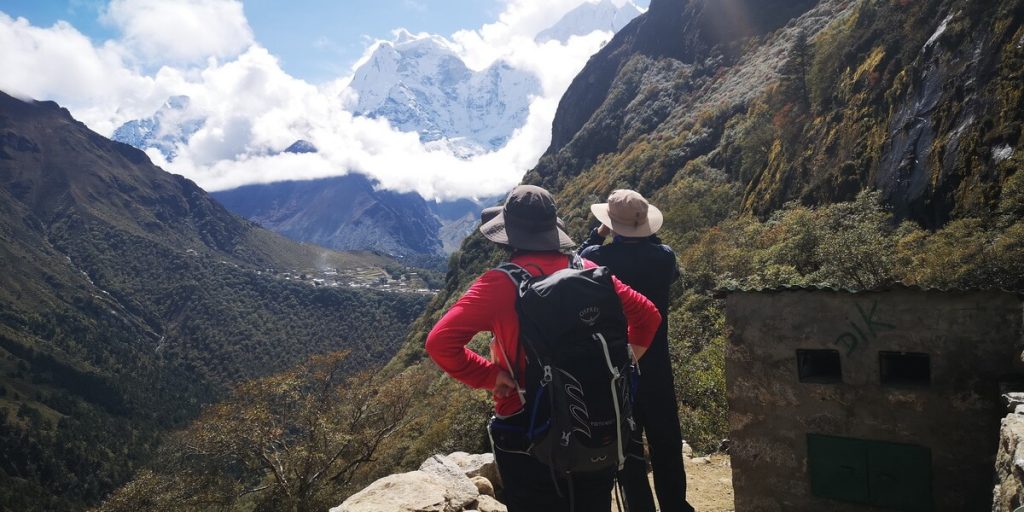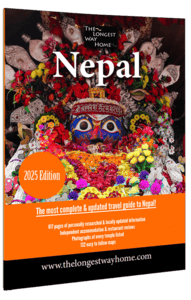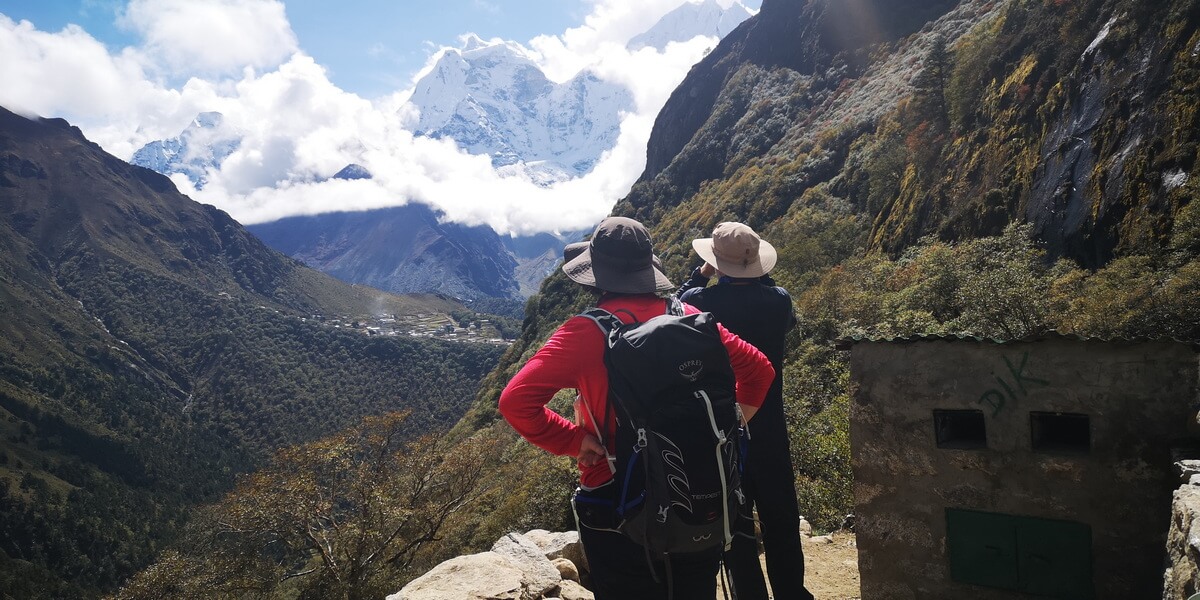
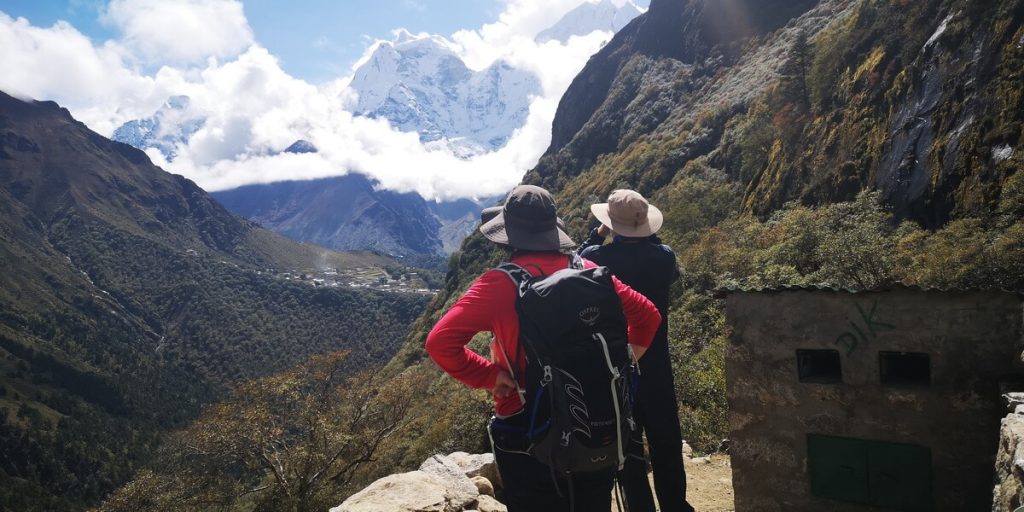
Update on the compulsory trekking guide rule in Nepal
If you are just discovering about the new mandatory trekking rule in Nepal, then please read my no holds barred article on the ban on independent trekking in Nepal for all the reasons on why it happened, where it’s being implemented, and what to do about it.
This page contains the very latest information on the ban on solo trekking based on my own boots on the ground experience, plus insider information on what TAAN (Trekking Agency Association of Nepal) and NTB (Nepal Tourism Board)have actually done since March and what you as a trekker can expect for the rest of the year in Nepal.
Hopefully it can help people wanting to know more about the situation as it is now and for those who are making up their minds about coming to Nepal for trekking.
Did the ban on Solo Trekking go ahead this year?
Yes, beyond a shadow of a doubt both TAAN and NTB have categorically stated that all non-Nepali trekkers visiting Nepal for trekking must have a registered trekking guide. They have removed all TIMS Cards for sale to independent trekkers and now only allow registered trekking agencies to issue them. There was also a fine introduced of USD $120 for any trekker caught without a guide. Trekking agencies are also being fined for issuing TIMS cards with no guide.

TAAN started the ban by giving out daily statistics on the number of TIMS cards agencies were selling. This all stopped after 4 weeks. Meanwhile the Solukhumbu region (Everest treks) refused to comply with the directive and they still to this day allow trekkers without a guide to trek in their region. No official statement from the Ministry of Tourism (above NTB) was published. Despite promises, TAAN did not open a single TIMS checkpoint to check TIMS cards or trekkers. No solo / independent trekkers were stopped. Police checkpoints let all trekkers with or without a guide through with no fine or harassment.
So the reality is the ban is in place, with warnings being published by TAAN and NTB, but there are no checkpoints or any staff manning the checkpoints.
Why did TAAN not put staff in the checkpoints?

That’s the big question. Again, do read my article on solo trekking being banned in Nepal for an in-depth look at the real reasons for the ban. In summary, when the ban was introduced they said checkpoints would be manned by April 1st. It never happened. I know people who work there. They said management were trying to recruit staff on low salaries and nobody was interested. The officials just kept saying, next week they will be staffed. Followed by next week, And, next week. It never happened.
Up until now, there has been no training, or recruitment drives for staff to work at the checkpoints.
So, again, as I wrote back in March as the ban was being announced both TAAN and NTB were and are simply pulling a massive money grab. There’s been zero new facilities, sign posts, training, or work put into trekker safety before, during, or after the announcement despite the massive amount of money they made from TIMS cards sold since the ban on solo trekking.
Meanwhile, this month TAAN announced new minimum guide salaries of $31 per day. And new porter minimum salaries of $24 per day. Moreover, on the 16th of July there might be a 13% TAX on domestic flights including to Lukla. Couple that with the international cost of living increases and the cost of trekking in Nepal is rapidly increasing. A return flight to Lukla could soon cost $400. That’s more than a return flight from Kathmandu to Kuala Lumpur!
Did the ban reduce the amount of trekkers visiting Nepal?
No. The reason for this is simple. The ban became official on April 1st, which was too late for most first peak season of the year trekkers to cancel international flights or indeed trek bookings. So for that very reason numbers were not reduced. However, the number of guides hired increased greatly as trekkers were caught unaware and struggled to find reasonably priced guides on short notice.

A side effect of the above is that price gouging became rampant. Trekking companies were doubling their guide fees as trekking guides became short in supply. Then came the reports of trekking agents adding on fees for permits and claiming it was a new tax (there was no tax). $30 National Park Fees became $50 as did TIMS cards. Thankfully trekkers who did their research were aware of this scam, but those that didn’t ended up paying.
The real answer to if the trekking ban reduced tourist numbers won’t happen until this coming season in 2023 and indeed in 2024 as many people are still unaware of the ban on independent trekking.
Did banning solo trekking reduce trekker deaths?
That’s another question that is difficult to answer. Numerous unsubstantiated reports of missing trekkers circulated this year in Solukhumbu (the region that allowed solo trekkers), however not one was substantiated. This is the first year these “reports” appeared in the manner that they did. Via guides, trekking agents, and social media. Again, none of them were ever proved.

One man who died of natural causes in the Solukhumbu region (who allow solo trekking) was photographed and the image was circulated repeatedly by guides, and trekking agents touting that solo trekking was dangerous. Again, he died of natural causes. There certainly was a pro-mandatory guide group pushing the agenda at any cost across social media. Strangely guides, and porters who died so far this year did not get as much publicity. Neither did the lack of weather warning systems during a late snow storm.
It won’t be fully known if trekker deaths or missing trekkers have been reduced until the end of 2023. The main peak season of the year is yet to start (when most people come). At the end of this peak season we should know if A) trekker numbers have risen or fallen, and B) have there been less deaths and missing trekkers.
So, the big question: Do you need a mandatory trekking guide this year in Nepal?
Firstly, I have always advocated that first time trekkers should take a guide when trekking in Nepal. I’ve seen six foot five military guys with experience trekking elsewhere fall to their knees trekking in Nepal despite being warned. From air quality, to food, terrain, weather, and so forth Nepali mountain trekking should be treated differently than elsewhere. If you have experience trekking specifically in Nepal, then trekking alone is a choice you should be able to make for yourself.
For now, you 100% do not need a trekking guide for any trek in the Solukhumbu treks. That’s treks like EBC, Three Passes, and Gokyo.
Officially, for all other treks that require a TIMS card then yes you need a mandatory guide. However, there are no TAAN or TIMS checkpoints open anywhere. So nobody is checking. The police will likely ask you if you have a guide or not. If not, they’ll just let you pass.

Does this mean you can go without a guide or TIMS card? It means legally no, but the reality is people are going trekking without the implemented checkpoints being open. This could all change within the space of a couple of weeks (will update here). TAAN could send a bunch of new guide out to staff the checkpoints, but all indications are that they are not doing this at the moment.
Again, in all cases, my take is if you haven’t trekked in Nepal before, hire a guide.
Full trekking details are in my books below ( the only guidebooks that include entry fees) and indeed if you are looking for a local registered guide then you can also use my Find a Trekking Guide Service.
Get my Trekking in Nepal Guidebook & discover more than anyone else!
Looking for more insider tips and information like this? Get the most up-to-date, popular and dedicated guidebook to Trekking in Nepal in the world. Covering 28 full treks over 400 pages. The only trekking guidebook in the world with trekking links showing you how to link treks together! Available as an instant download or worldwide shipping for the paperback edition!
Take a look below and you’ll find out why this beats all other guidebooks!
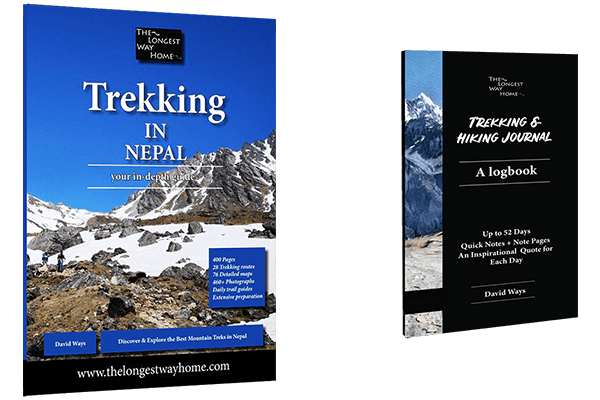
Get the Digital Trekking in Nepal guidebook here!
Get the Paperback Trekking in Nepal Guidebook here!
Get the paperback Trekking & Hiking Journal here!
Looking for the whole country or the most popular treks? Get my full Nepal Guidebook (the only guidebook in the world today that includes entry prices for everything, full maps, and of course the best information).
